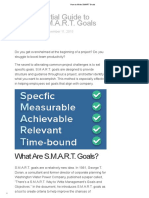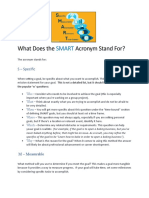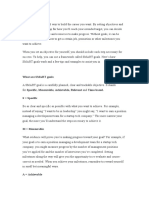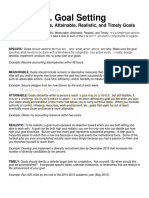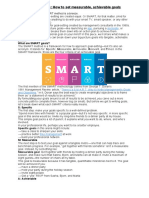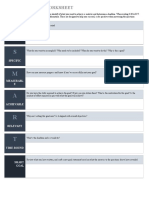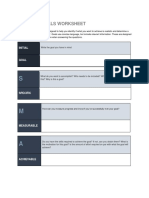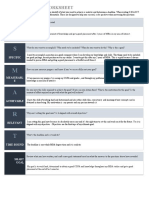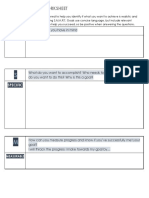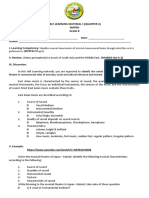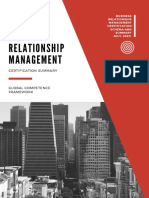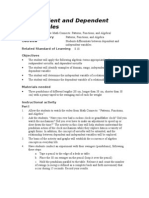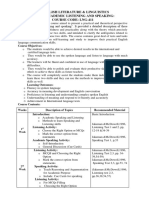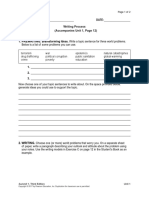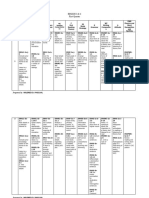0% found this document useful (0 votes)
53 views6 pagesWhat Are S.M.A.R.T. Goals?
The document discusses S.M.A.R.T. goals, which are goals that are specific, measurable, achievable, relevant, and time-bound. It provides examples of non-S.M.A.R.T. goals and outlines how to rewrite them according to the S.M.A.R.T. criteria to make the goals clearer and more likely to be accomplished. The key aspects of each S.M.A.R.T. criteria are also defined in the document.
Uploaded by
Ja Moon MaiCopyright
© © All Rights Reserved
We take content rights seriously. If you suspect this is your content, claim it here.
Available Formats
Download as DOCX, PDF, TXT or read online on Scribd
0% found this document useful (0 votes)
53 views6 pagesWhat Are S.M.A.R.T. Goals?
The document discusses S.M.A.R.T. goals, which are goals that are specific, measurable, achievable, relevant, and time-bound. It provides examples of non-S.M.A.R.T. goals and outlines how to rewrite them according to the S.M.A.R.T. criteria to make the goals clearer and more likely to be accomplished. The key aspects of each S.M.A.R.T. criteria are also defined in the document.
Uploaded by
Ja Moon MaiCopyright
© © All Rights Reserved
We take content rights seriously. If you suspect this is your content, claim it here.
Available Formats
Download as DOCX, PDF, TXT or read online on Scribd
/ 6
